Tsinghua University President Li Luming led a delegation to Australia in early November, strengthening academic ties and expanding collaborative engagement.
The delegation visited key Australian universities, including the University of New South Wales (UNSW), the University of Sydney (USYD), the Australian National University (ANU), the University of Melbourne, and Monash University. They also visited the Chinese Embassy in Australia and engaged in discussions with Tsinghua alumni based in Australia.
During the visit to the University of New South Wales on November 4, Li met UNSW Vice‑Chancellor and President Attila Brungs.
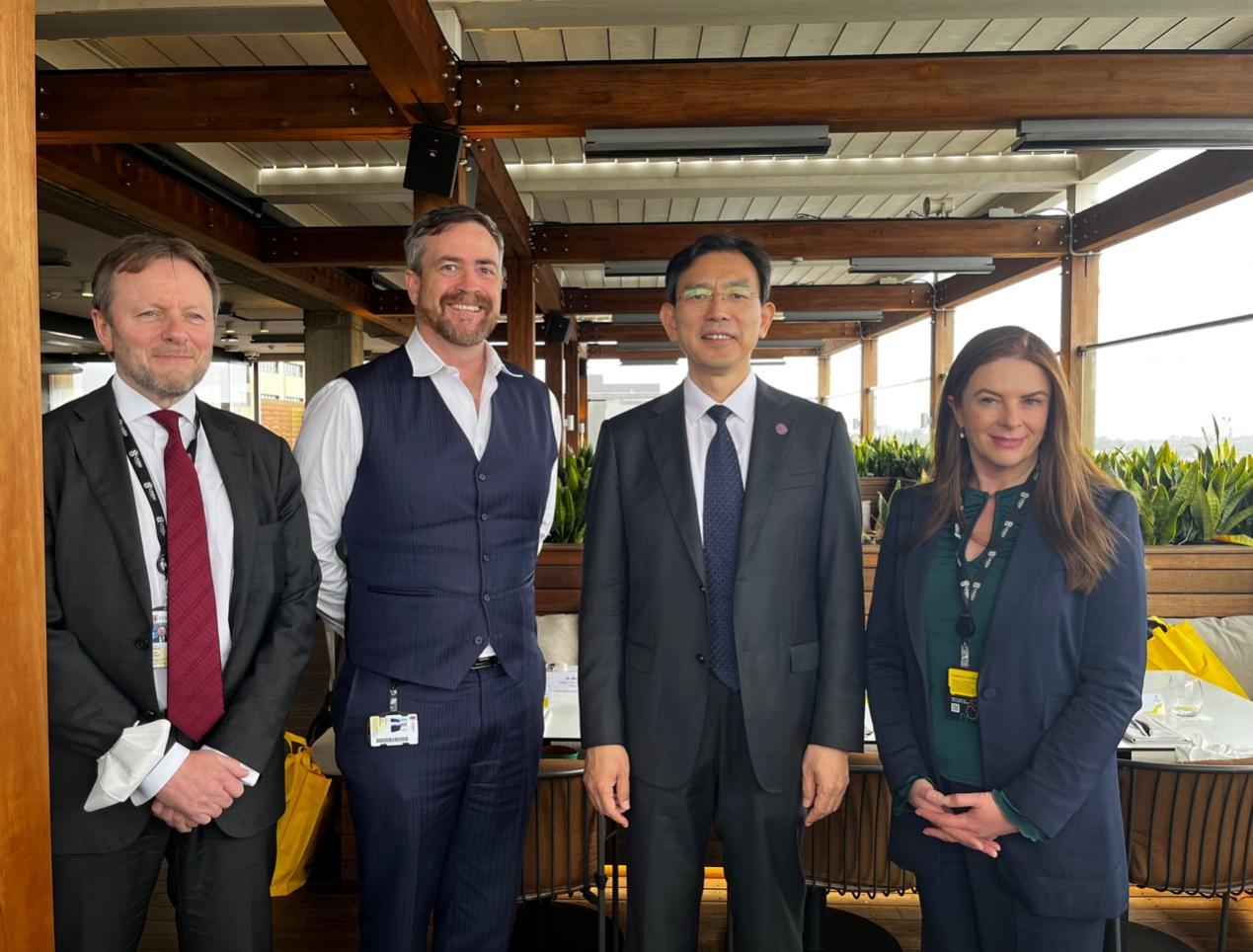
Li Luming (second right) meets with UNSW Vice-Chancellor and President Attila Brungs.
Li Luming provided an overview of Tsinghua University’s latest developments in talent cultivation and technological innovation. He emphasized Tsinghua’s commitment to society and future, exploring the AI-empowered education and teaching, and actively pursuing international collaborations. Noting the strong foundation of joint research and talent training between Tsinghua and UNSW, he expressed hope for further strengthening cooperation in the future, contributing to the advancement of global higher education and technological progress.
Attila Brungs emphasized the University of New South Wales’ commitment to its partnership with Tsinghua University. He highlighted the numerous joint research outcomes already achieved and expressed optimism about deepening collaboration to yield even greater results in the future.
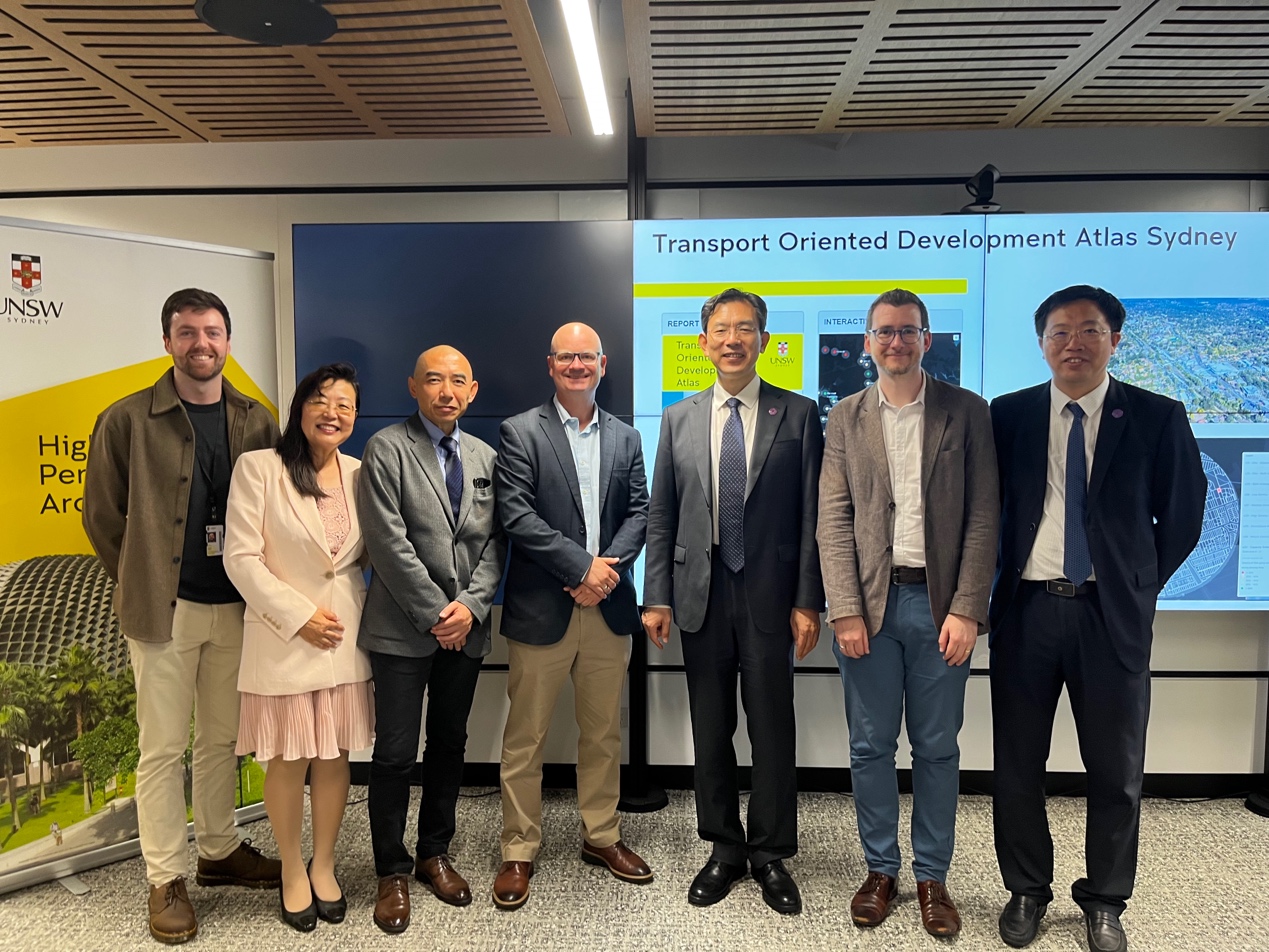
Li Luming (third right) visits the City Futures Research Centre at UNSW.
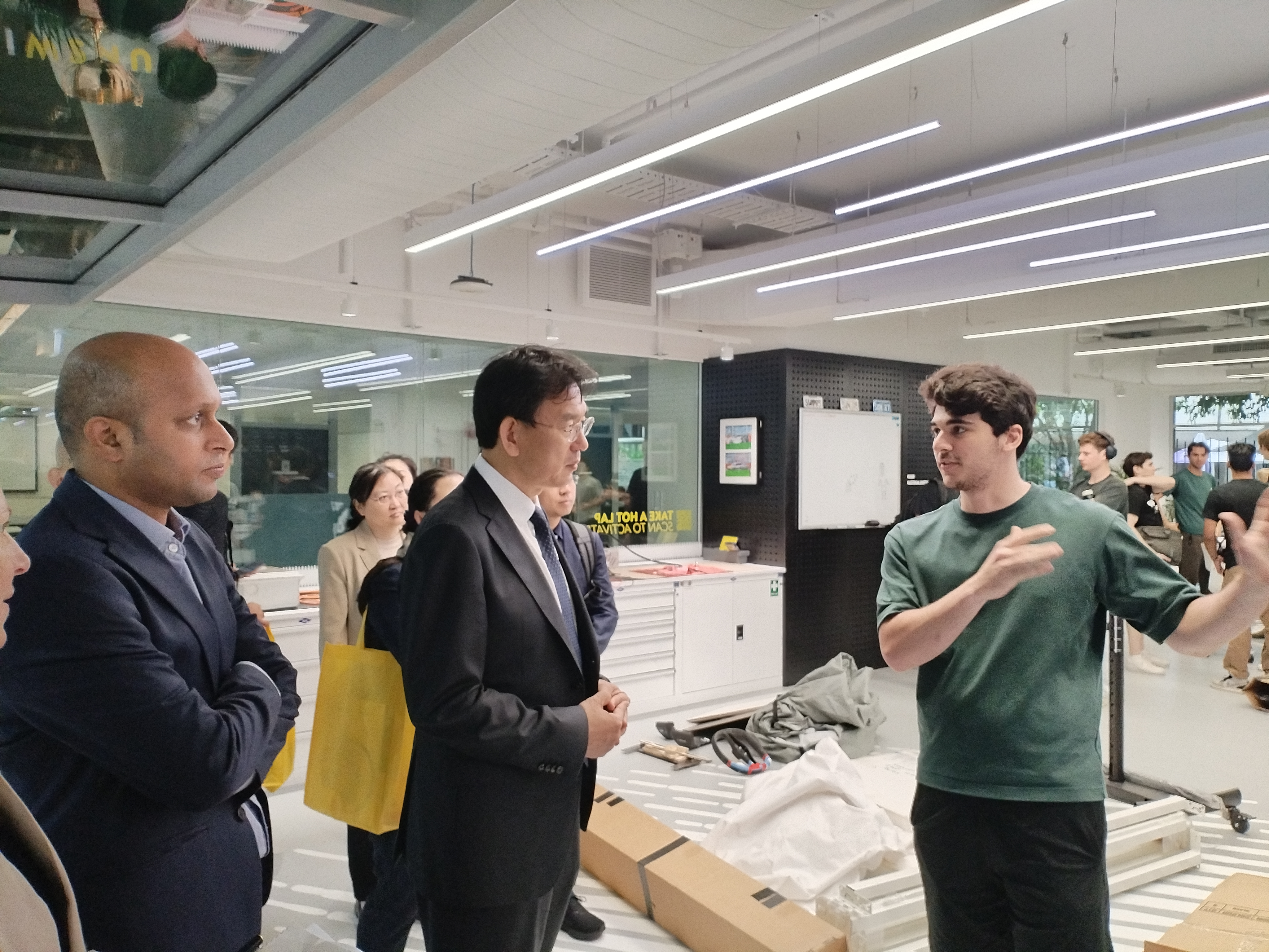
Li Luming (second left) visits the Michael Crouch Innovation Centre at UNSW.
Li Luming also toured UNSW’s City Futures Research Centre and Michael Crouch Innovation Centre.
On the same day, Li Luming led his delegation to the University of Sydney, where they met with USYD Vice-Chancellor and President Mark Scott.
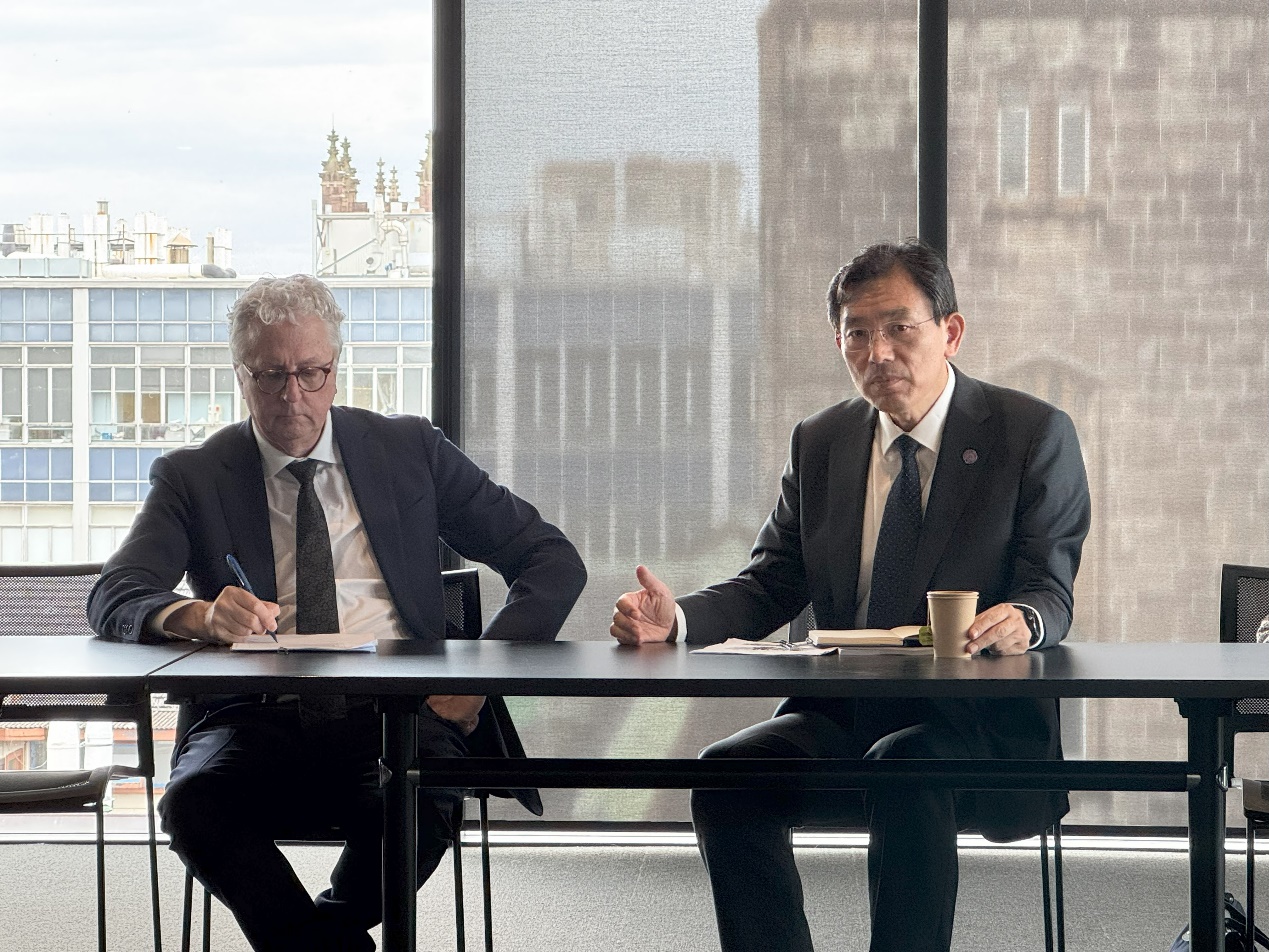
Li Luming (right) meets USYD Vice-Chancellor and President Mark Scott.
Li Luming outlined Tsinghua University’s recent progress and initiatives in teaching and research. He emphasized the essential role that faculty and students play in fostering international collaboration. Expressing hope for strengthening cooperation with the University of Sydney in talent exchange and research innovation, Li noted that such efforts would actively contribute to the growth of both institutions and the shared goal of building a community with a shared future for mankind.
Mark Scott emphasized the University of Sydney’s commitment to international education and research partnerships. He highlighted the long-standing, friendly collaboration between the two universities. He mentioned his upcoming visit to Tsinghua and looks forward to strengthening multidisciplinary cooperation in the future.
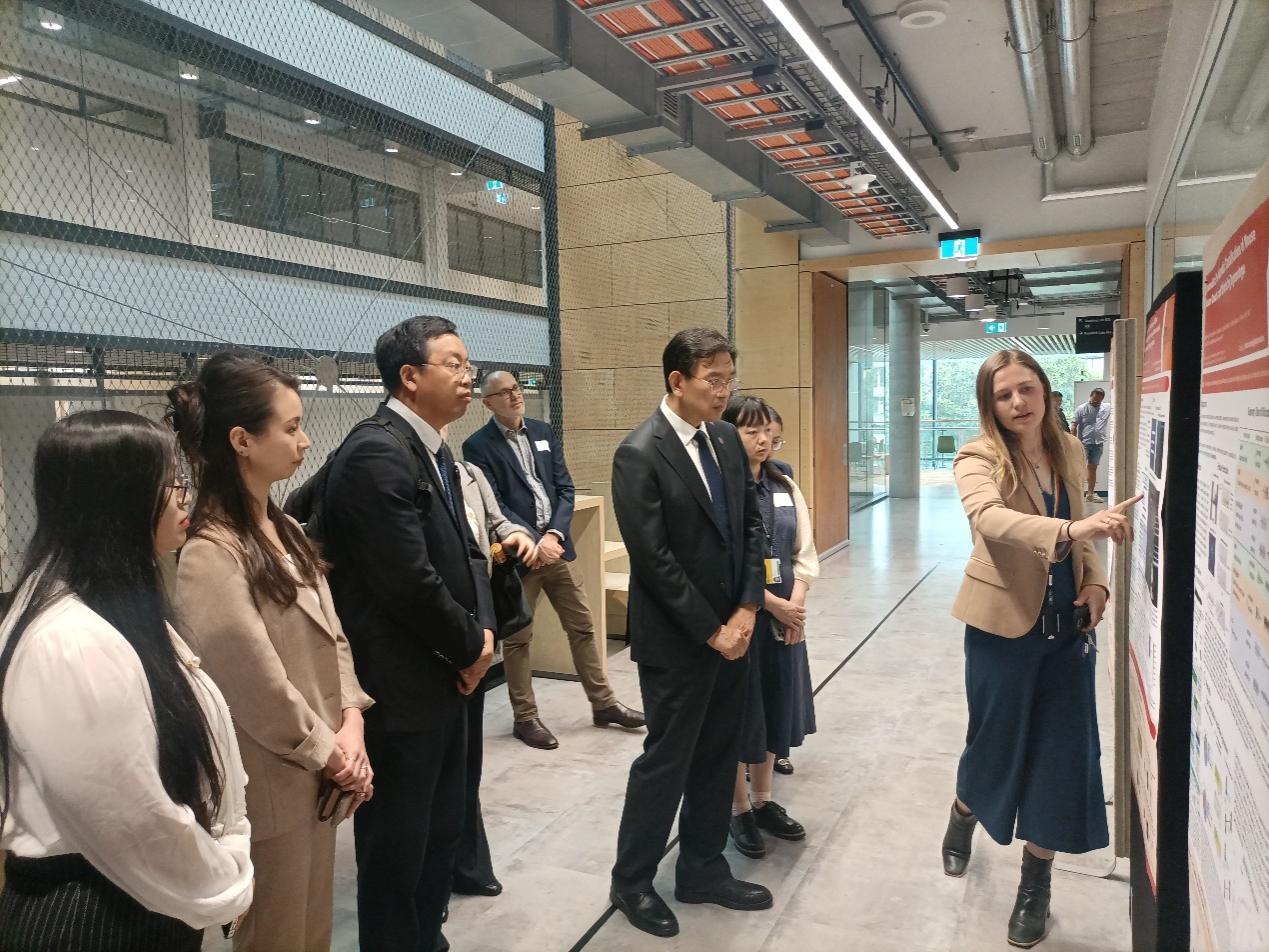
Visit to the research laboratories at USYD.
The two sides engaged in in-depth discussions on academic development and collaborative opportunities in fields such as architecture, computer science, and medicine. Following the meeting, Li Luming and his delegation visited the University of Sydney's research laboratories, and explored the university's latest innovation in biomedical research.
On November 5, Li Luming and his delegation visited the Australian National University, where they met with ANU Vice-Chancellor and President Genevieve Bell.
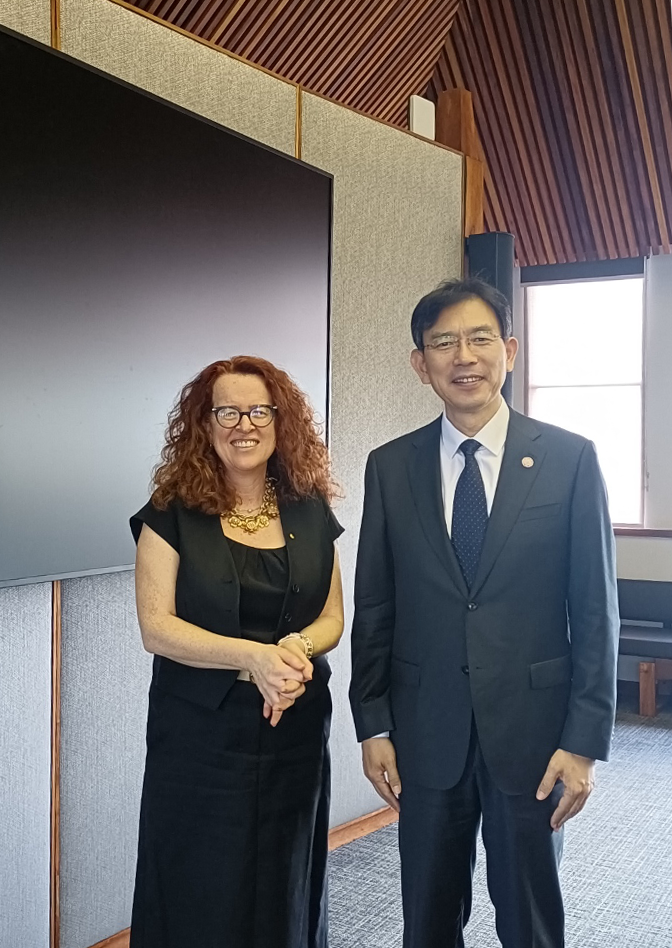
Li Luming (right) meets with ANU Vice-Chancellor Genevieve Bell.
Li Luming shared Tsinghua University’s initiatives in developing students' global competence, emphasizing its commitment to nurturing top-tier, innovative talents. He noted that Tsinghua has been exploring the integration of AI into education and teaching, and expressed hope for deepening collaboration with ANU, particularly in areas like climate change and AI empowering education. Li underscored that such partnerships could enhance both institutions’ contributions to addressing global challenges.
Genevieve Bell provided an overview of the Australian National University’s recent developments. She expressed her anticipation for continued collaboration with Tsinghua University in various forms, particularly in areas such as climate change, energy, and sustainable development.
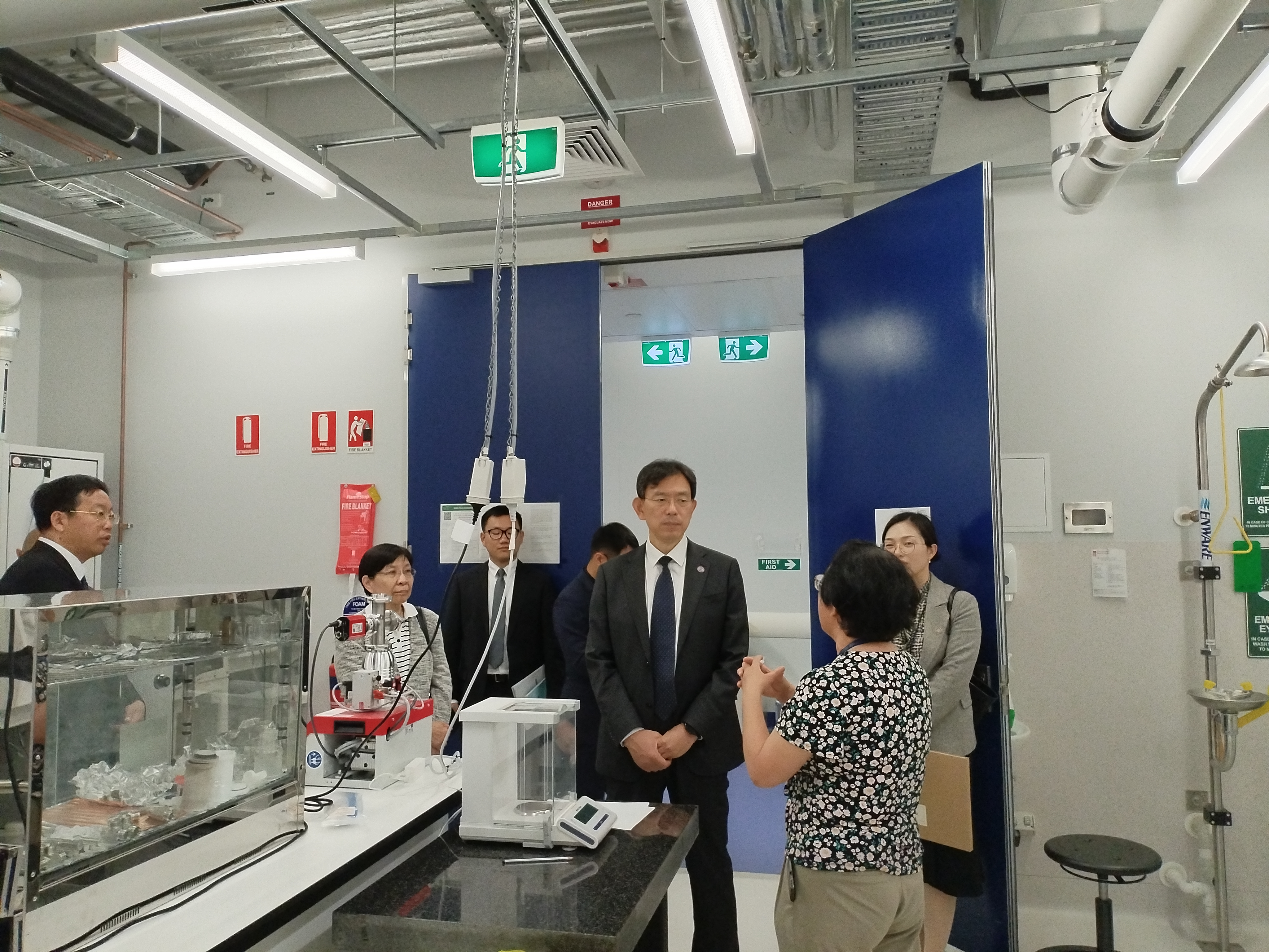
Li Luming (third right) visits a lab at ANU Research School of Chemistry.
Li Luming and his delegation also toured the Research school of Chemistry at the Australian National University.
On November 6, Li Luming and his delegation visited the University of Melbourne, where they met with Vice-Chancellor Duncan Maskell. The delegation also toured the university’s Science Gallery and the Faculty of Engineering and Information Technology.
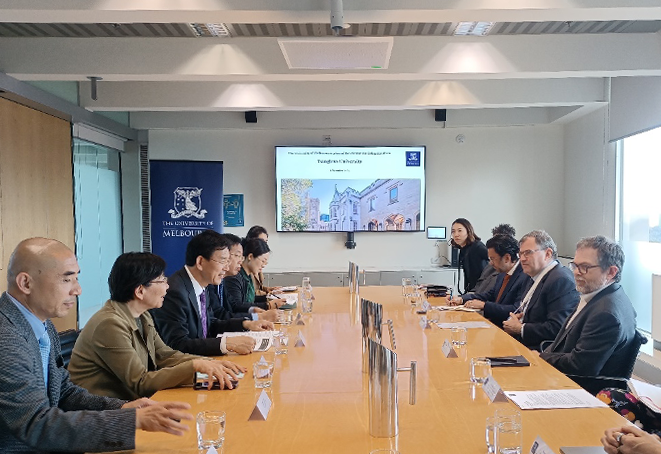
A meeting with the University of Melbourne
Li Luming provided an update on Tsinghua University’s latest advancements in AI empowering education and teaching. He emphasized the strong foundation for cooperation between the two universities, particularly in the field of medical sciences. With the upcoming 30th anniversary of the cooperative partnership between Tsinghua University and the University of Melbourne in 2025, Li anticipated further enhancing faculty and student exchanges, as well as research collaboration. He highlighted the importance of joint efforts in exploring the future impact of AI on education and other significant issues, as well as contributing to the intellectual and innovative strength of both universities.
Duncan Maskell reflected on the long-standing, friendly cooperation between the University of Melbourne and Tsinghua University. He emphasized the University of Melbourne’s commitment to the partnership and expressed anticipation for further strengthening collaboration across various fields, aiming to achieve even more fruitful outcomes in the future.
On November 6, Li Luming and his delegation visited Monash University, where they met with Vice-Chancellor and President Sharon Pickering. The delegation also toured the Monash Innovation Labs.
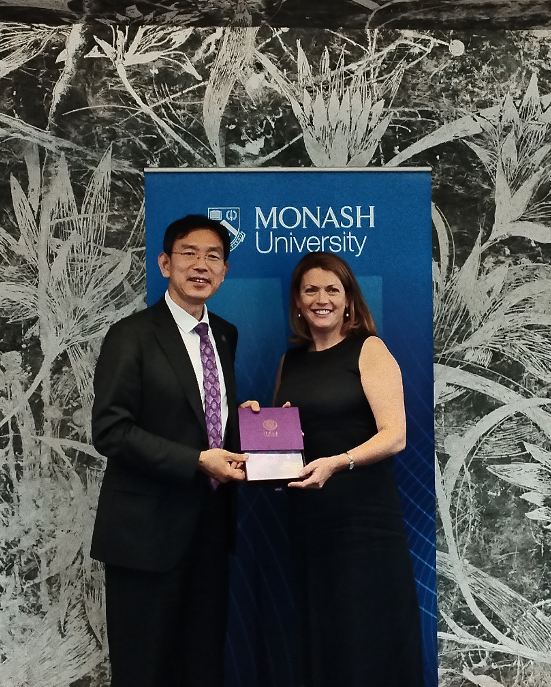
Li Luming (left) meets with Monash University Vice-Chancellor and President Sharon Pickering.
Li Luming emphasized the importance of high-level international collaboration in university talent cultivation. In addressing global challenges such as climate change, AI ethics, and environmental protection, he expressed hope for strengthened cooperation between the two institutions in areas such as student exchange, joint research, and online education. Li highlighted the potential for exploring the future of AI empowering education, with the aim of achieving greater outcomes.
Sharon Pickering introduced Monash University's developments in medical disciplines and internationalization efforts. She said that Monash University adheres to an open approach to education and has a solid research foundation in the field of medicine. Pickering expressed willingness to strengthen cooperation with Tsinghua University and highlighted the potential for advancing progress in areas such as healthcare and carbon neutrality, contributing university expertise to address global challenges like public health and climate change.

Li Luming (second left) communicates with Chinese Ambassador to Australia Xiao Qian.
During their visit to Australia, Li Luming and his delegation visited the Chinese Embassy in Australia, where they engaged in an in-depth discussion with the Chinese Ambassador to Australia Xiao Qian. Li provided an update on Tsinghua University’s latest developments and its collaborations with Australian universities. Xiao highlighted the ongoing cooperation and exchanges between China and Australia in the field of education.
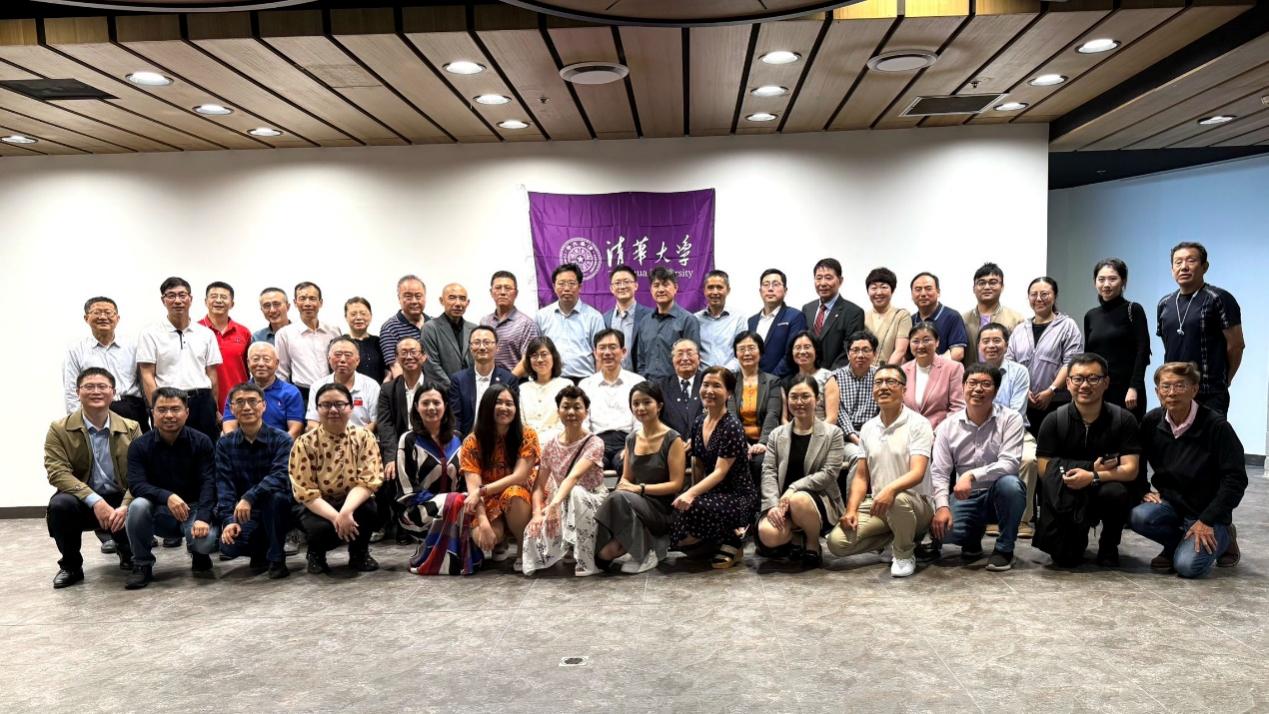
A group photo with Tsinghua alumni in Australia.
During the visit, Li Luming held a discussion with representatives of Tsinghua alumni in Australia, providing an update on the university’s recent developments.
Li expressed his gratitude to the alumni for their ongoing support and care for their alma mater, and encouraged them to continue contributing to the university’s growth and the prosperity of the nation. Alumni shared updates on the alumni association’s activities and expressed their commitment to actively contributing to Tsinghua’s development.
Editors:Li Han, JP, Xu Ziqian

